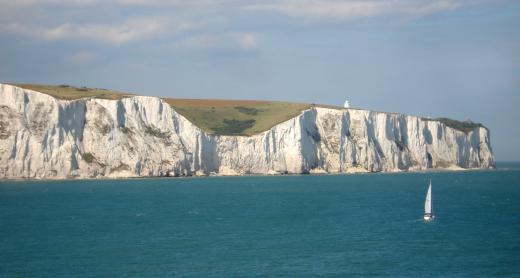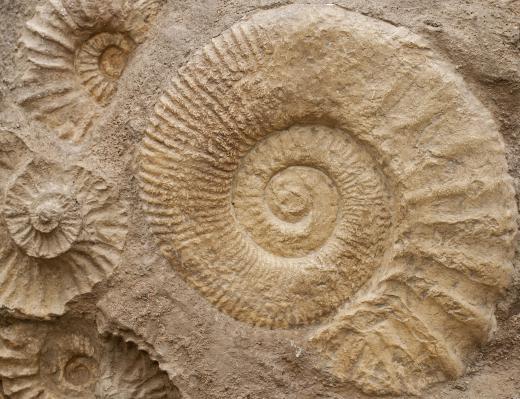How Was the Geological Time Scale Developed?
 Michael Anissimov
Michael Anissimov
The geological time scale has its origins in 1815, when a canal builder named William Smith noticed a relationship between layers of rock and the fossils to be found within them. At this time, fossils were thought to be either diabolical artifacts or inorganic mineral arrangements, but these fossils were the key to the advent of this time scale.
Being a canal builder, Smith looked at rocks quite frequently. He began to associate certain fossils with certain layers. The field of geology was flourishing at the time, directing attention towards the matter. Scientists around the world began to observe the layer-fossil correlation, but it was not until the mid-19th century that Darwin's Origin of Species was published and the theory of evolution began to gain credibility.

Evolutionarily speaking, it became clear why different layers of rock contained different fossils. The fossils were organisms that lived at varying time periods. The rock layers and the time periods at which they formed acquired names and classifications. This is the geological time scale.
A classification scheme based on eras, periods, and epochs was formulated, with each representing a progressively shorter division of time. The first era in the the geological time scale is the Precambrian, from which there are barely any fossils to be found. Next is the Paleozoic era (ancient life), followed by the Mesozoic (middle life) and the Cenozoic (modern life).

The subdivisions of eras, periods, were generally named after locations where fossils from that respective period were found. For example, the Devonian period is named after Devonshire in southwest England, and the Permian after the Permian kingdom in Russia. One exception, the Cretaceous period, is derived from the Latin word creta, which means 'chalk'. This is because the associated fossils were discovered in the chalk cliffs on the coast of England. Geological time scale periods have a diversity of reasons behind their names.
Epochs in the the geological time scale are given specific names only for the Cenozoic era, the most recent. In the Pleistocene epoch, which takes its name from the Greek words meaning 'most' and 'recent', 90% of discovered fossils represent species which still live today. Before that was the Eocene epoch, of which only 1% - 5% of the species are still alive. Of all the species that have ever lived on earth, those currently living only represent a small percentage.
Thanks to radioactive dating, scientists are now able to identify fossil age with extreme precision, associating each fossil conclusively with its specific period or epoch in the the geological time scale. This helps us trace the relics of the evolutionary tree as it branched in billions of directions.
AS FEATURED ON:
AS FEATURED ON:












Discussion Comments
I had to learn about the Geological Time Scale and all of its eras and periods in my historical geology class in college. Though it seemed confusing at first, it made a lot of sense once I understood it and helped to put the history of the earth into perspective.
Post your comments